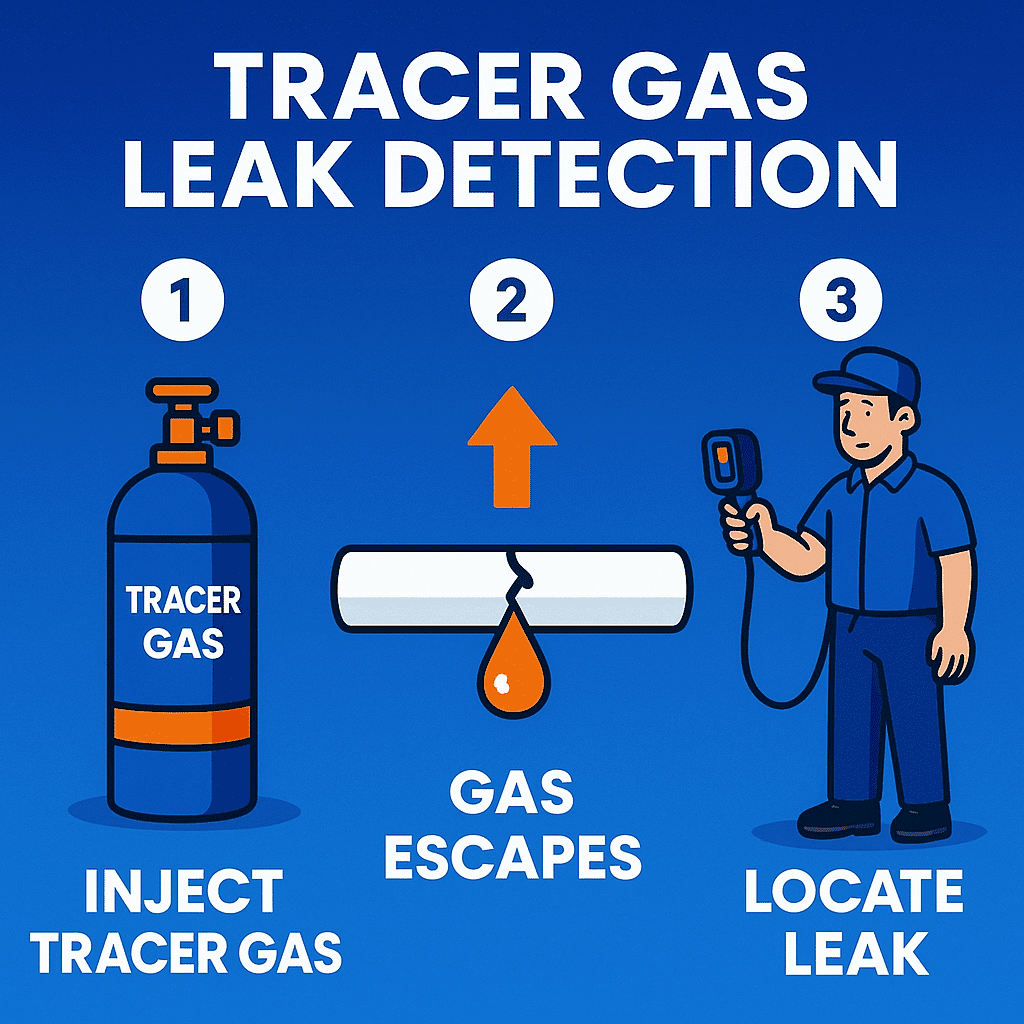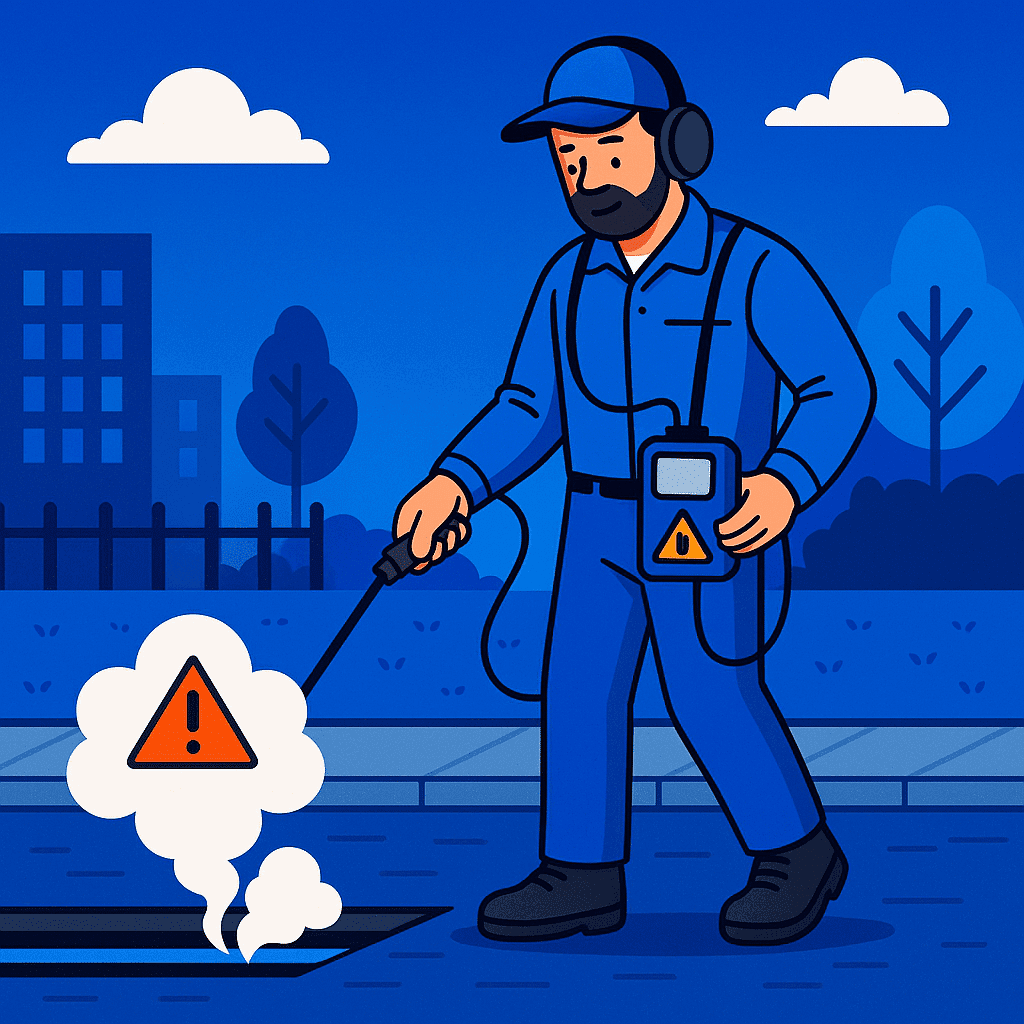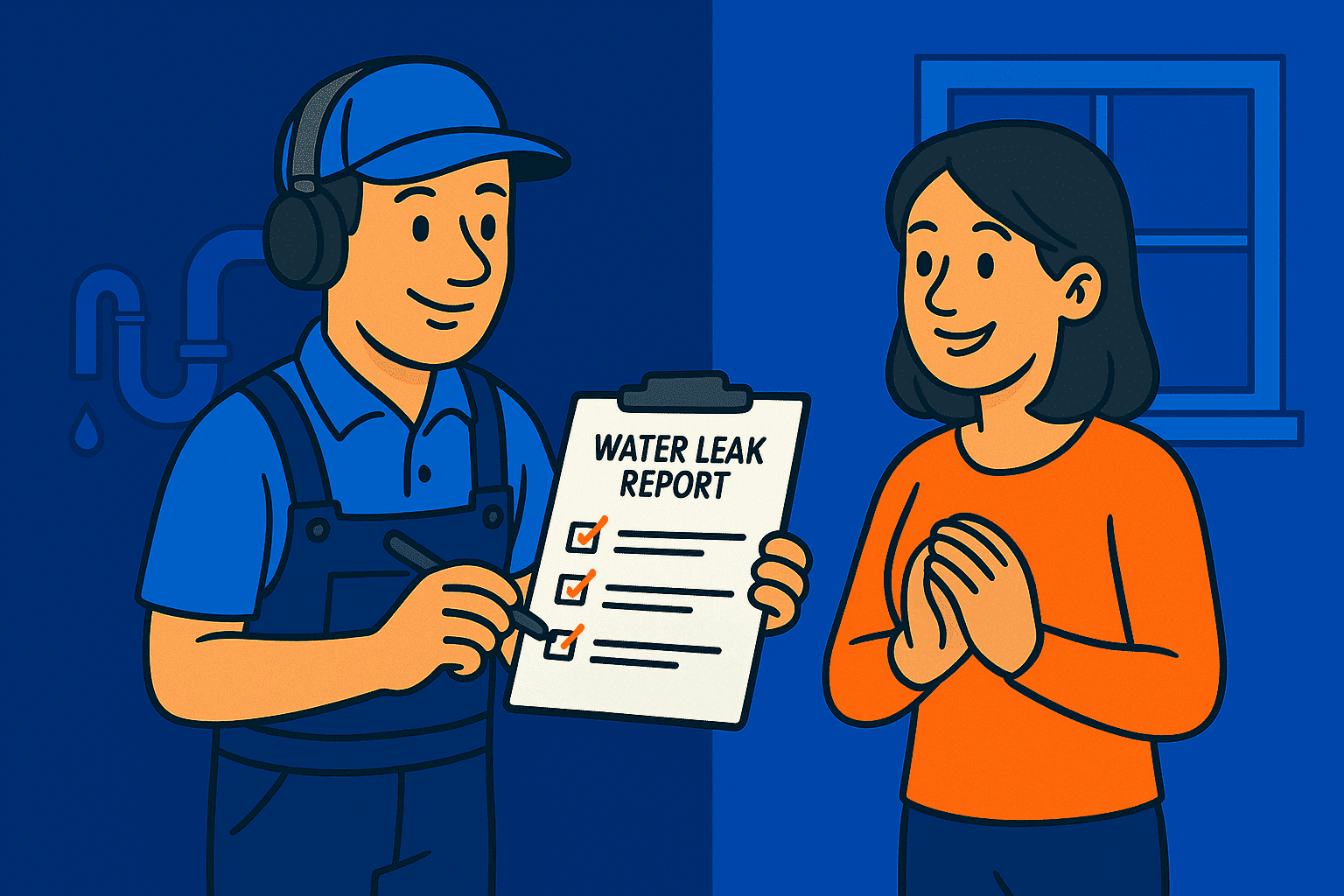Tracer Gas Leak Detection Specialists
Tracer Gas Leak Detection in Cornwall and Devon. Reliable water leak detection using gas tracing 🤝
Get A Quote Today!
Fast Reply Within 15 secs – 20 mins 🚀
↓ START THE PROCESS NOW ↓
🔍 Tracer Gas Leak Detection in Cornwall & Devon
Pinpoint hidden leaks with military-grade precision – no guesswork, no unnecessary damage to your property
Got a stubborn leak that’s playing hide and seek? After 30+ years finding leaks across Cornwall and Devon, I can tell you that tracer gas is often the ace up our sleeve when other methods come up short. It’s like having X-ray vision for your pipework – we can see through concrete, tiles, even that expensive marble flooring you’re worried about damaging. Whether you need Water Leak Detection Specialist or Trace and Access Plumbers, we’ve got you covered.
What Is Tracer Gas Leak Detection?
Think of tracer gas as the bloodhound of leak detection. We introduce a completely safe mixture of 5% hydrogen and 95% nitrogen into your pipes. This gas is lighter than air and has molecules so tiny they’ll squeeze through the smallest crack – we’re talking leaks that lose less than a teaspoon of water per day. It’s particularly effective for Concrete Slab Leak Detection where pipes run beneath concrete foundations.
The beauty is, this gas can penetrate through virtually any material: concrete slabs, screed, tiles, timber, carpet – you name it. Once it escapes from the leak, it rises straight up to the surface where our advanced gas detection equipment (the Rolls-Royce of leak detection technology) can sniff it out down to just 1 part per million.
When Do You Need Tracer Gas Detection?
🏠 Concrete Floor Slabs
Perfect for leaks beneath solid floors where Acoustic Leak Detection struggles with sound transmission
🔥 Central Heating Systems
Ideal when your boiler keeps losing pressure but Thermal Imaging Leak Detection can’t spot cold water leaks
🚰 Long Pipe Runs
Essential for Underground Water Leak Detection and Mains Water Leak Detection in lengthy supplies
🏊 Swimming Pools
Perfect for Swimming Pool Leak Detection where pump noise makes acoustic methods impossible
How Tracer Gas Works: The Science Made Simple

Why Choose Tracer Gas Over Other Methods?
| Detection Method | Best For | Limitations | Accuracy |
|---|---|---|---|
| Tracer Gas | All pipe types, any depth | Requires draining pipes | 99% success rate |
| Acoustic | Pressurised systems | Struggles with insulated pipes | 85% success rate |
| Thermal Imaging | Hot water leaks | Useless for cold water | 70% success rate |
| Moisture Meters | Surface detection | Can’t trace to source | 60% success rate |
Is Tracer Gas Safe?

Absolutely. Let me put your mind at rest – I’ve been using this method for decades without a single safety incident. Here’s why it’s completely safe:
- The 5% hydrogen mixture is well below combustible levels (needs 18% to ignite)
- It’s certified non-flammable with a green safety label
- Non-toxic and non-corrosive – safe for drinking water pipes
- Naturally dissipates quickly once it reaches open air
- We follow strict British Standard BS EN 13192:2002 procedures
The DCI Difference: Why We’re Cornwall & Devon’s Choice
I’ve invested in the best equipment money can buy because in this game, second-rate kit means second-rate results. Our specialist detection equipment is worth every penny when we’re saving you from ripping up your entire ground floor. Whether it’s Central Heating Leak Detection or general Plumbing Leak Services, accuracy is everything.

How Long Does Tracer Gas Detection Take?
Here’s what actually happens when we arrive – though every job’s different:
- 15-30 minutes: Initial assessment and pipe isolation
- 20-40 minutes: Draining and gas introduction
- 30 minutes to 3 hours: Detection and pinpointing (varies greatly)
- 15 minutes: Report preparation
Total time: 1.5 to 6 hours depending on property size and complexity. A straightforward leak in a semi-detached house might take 2-3 hours, while Commercial Leak Detection in complex properties or multiple leak scenarios can take up to 6 hours. Deep underground pipes (over 4 feet) need longer for the gas to permeate to the surface. Still beats weeks of exploratory digging!
Environmental Impact: The Green Choice
Unlike helium (which is a finite resource we’re actually running out of), hydrogen is the most abundant element in the universe. Our gas mixture:
- ✅ Produces zero harmful emissions
- ✅ Doesn’t deplete natural resources
- ✅ Prevents water waste by finding leaks fast
- ✅ Reduces carbon footprint versus excavation
Ready to Find That Hidden Leak?
Stop the guesswork. Stop the damage. Stop the water waste. If you’ve got a leak that’s driving you mad, tracer gas detection is likely your answer. With four decades of experience and the best equipment in the business, we’ll find it.
📞 Call DCI Now: 07822 025 911Remember: Every day that leak runs is money down the drain and potential damage to your property. One call to DCI Leak Detection could save you thousands.
Providing professional tracer gas leak detection services across Cornwall & Devon including:
Truro • Exeter • Plymouth • Torquay • Newquay • St Austell • Barnstaple • Bodmin • Penzance • Falmouth • Paignton • Camborne • Redruth • Tiverton • Newton Abbot • Helston • Brixham • St Ives • Launceston • Bideford • Liskeard • Saltash • Tavistock • Okehampton • Totnes • Kingsbridge • Wadebridge • Teignmouth • Hayle • Dartmouth
Frequently Asked Question Tracer Gas
What exactly is tracer gas?
Tracer gas is a safe mixture of 5% hydrogen and 95% nitrogen. We chose this specific blend because hydrogen has the smallest molecules of any element – they’re so tiny they can squeeze through gaps just 0.0004mm wide. The nitrogen acts as a carrier gas, keeping the mixture stable and non-flammable.
Is tracer gas dangerous to my family or pets?
How accurate is tracer gas detection?
Will it work on all types of pipes?
Why use hydrogen instead of helium?
How deep underground can you detect?
What if I have multiple leaks?
Does weather affect the detection?
How long before I need to use tracer gas again?
Will my insurance cover tracer gas detection?
What's included in your tracer gas service?
Do I need to prepare my property?
Just ensure we can access your stopcock and any isolation valves. Clear stored items from around your boiler or hot water cylinder. We’ll handle everything else. You don’t need to lift carpets or move furniture – the gas finds its way up regardless.
Can I stay home during the test?
What about my underfloor heating?
Tracer gas is perfect for underfloor heating leaks. The gas travels through the screed and up through joints in your flooring. We can map your entire system without lifting a single tile. It’s far less invasive than thermal imaging for these systems.
